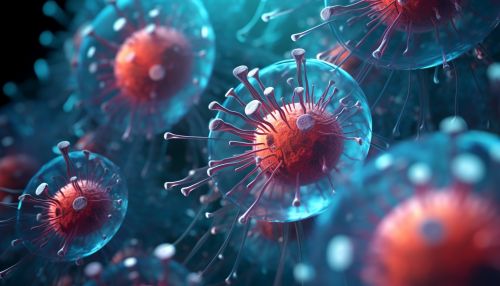SARS-CoV-2
Introduction
SARS-CoV-2, also known as Severe Acute Respiratory Syndrome Coronavirus 2, is a novel coronavirus that was first identified in December 2019 in the city of Wuhan, China. It is the causative agent of COVID-19, a disease that has led to a global pandemic.


Taxonomy
SARS-CoV-2 belongs to the family Coronaviridae, in the subfamily Orthocoronavirinae. It is part of the species Severe acute respiratory syndrome-related coronavirus (SARSr-CoV). The virus is also classified within the broader group of betacoronaviruses, which also includes SARS-CoV and MERS-CoV.
Structure and Genome
The virus is enveloped, positive-sense, single-stranded RNA virus. It has a crown-like appearance under an electron microscope due to the presence of spike glycoproteins on the envelope. The genome of SARS-CoV-2 is approximately 30,000 bases long, which is the longest genome among known RNA viruses.
Transmission and Symptoms
SARS-CoV-2 is primarily transmitted between people through respiratory droplets and contact routes. Symptoms of COVID-19 vary in severity from asymptomatic to severe illness. The most common symptoms include fever, dry cough, and fatigue. Severe cases can lead to pneumonia, acute respiratory distress syndrome (ARDS), and death.
Prevention and Treatment
Prevention strategies include hand hygiene, wearing face masks, respiratory etiquette, and social distancing. As of now, several vaccines have been developed and approved for emergency use to prevent COVID-19. Treatment primarily involves supportive care, including rest, hydration, and symptomatic relief.
Impact
The emergence of SARS-CoV-2 has had a profound impact on global health, economies, and daily life. The virus has caused millions of deaths worldwide and has overwhelmed healthcare systems in many countries.
